We offer a wide range of bindings depending on
requirements, durability, intended use, page count, content material and price.
Here you can download the order form for bindings. Please use the link in the box below to order.
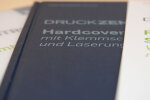
Hardcover binding is the higher quality way to present your work.
You also have a choice of two options for this type of binding:
1) Hardcover/clamp binding. Here, the prints are provided with a stiff binding cover at the front and back and clamped together at the spine with a rail. The maximum book block thickness is 3 cm (approx. 270 sheets). The covers and the rail are covered with colored linen structure for the format DIN A4 in dark blue, burgundy and black or imitation leather in dark blue and black and for the format DIN A5 in dark blue,.
2) Handmade hardcover binding is our highest quality binding option. We make a book cover individually for your work, no matter what thickness and size. This book cover is covered with genuine linen fabric, which we can offer in many different colors. Just ask for it.
For hardcover books, we can also imprint your name or book title on the cover or spine. We do this with a laser, which ablates the surface of the cover material. This results in lettering or logos that are lighter in color than the base material. We require a PDF file for this. Unfortunately, inscriptions in other colors are not possible.
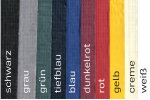
Softcover binding is the simplest of our adhesive binding types offered and is suitable, for example, for all work to be delivered with a paper thickness of up to 90 g.
Softcover/foil. Here the front side consists of matt foil. This is ideal if you have an attractive cover page. The spine and the back cover are made of coloured cardboard, which we have in stock in cream, yellow, red, dark red, blue, deep blue, green, grey and black.
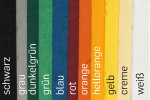
With the soft cover/full cardboard, the entire cover consists of a white or coloured cardboard, which can also be printed according to your ideas. To protect the print, the cover can be laminated matt or glossy.
We offer the cardboard colours white, cream, yellow, light orange, orange, red, blue, green, dark green, grey and black.
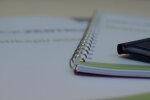
Spiral bindings are not permitted for papers that are submitted and graded. Pages could be exchanged afterwards.
1) With plastic spiral binding, loose sheets are punched and held together with a plastic spiral. This type of binding is inexpensive and can be turned easily, but the pages cannot be turned to the back.
2) With wire comb binding, loose sheets are punched and held together with a wire spiral (like a college notebook). It is easy to turn pages and the pages can be turned to the back.
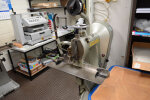
Staples hold sheets together with one or more metal staples. This can be with a stack of paper with one staple at the top of the corner or on one side with two staples.
However, a staple can also go through the spine of folded sheets. This then results in a magazine-like staple and we call it "centre stapling".
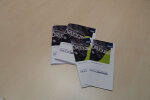
For centre stitching, the wire is stapled through the spine of the pages and then folded in half. With centre stitching, the number of pages must be divisible by 4. It therefore has the character of a magazine.
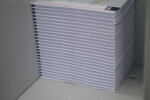
In block gluing, the sheet edges of a stack of paper are coated with glue and a tear-off block is produced, for example.